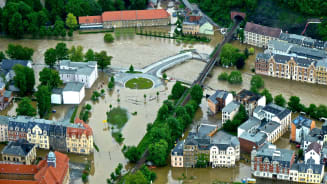Seeking Alternative Risk Transfer Solutions
A typical construction project involves multiple stakeholders, each with varying risk tolerance. Finding a comprehensive risk solution that aligns with all stakeholders' objectives can be challenging. However, several alternative risk transfer solutions are available.
Parametric Insurance
Parametric insurance has emerged as a compelling and unique solution for construction projects in locations where extreme weather events can bring a project to a grinding halt, causing delays and financial losses.
Parametric solutions can also dovetail traditional insurance solutions and lower the total cost of risk by allowing a construction client to increase its program retention and fund a portion of a parametric solution with the associated premium savings.
Captives
As traditional insurance costs remain challenging, turning to captives or protected cell companies can help businesses to fund non-insurable risks, retain more risk through a formal mechanism, stabilize risk financing costs over time and navigate insurance market volatility. Through this alternative risk financing option, businesses can also gain direct access to the reinsurance market and create a strong governance environment that promotes better risk management behaviors.















































































































































